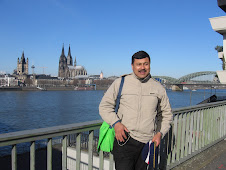"Biogas has reduced the consumption of fuelwood as a cooking fuel to less than half ", says Alkaiya Chaudhari, a user of Chetana Women Community Forest User Group (CFUG) in Geta-3, Kailali. Alkaiya adds, "Previously we used to consume six to seven bhari of fuelwood per month (1 bhari is around 30 kg). Now, we need only three bhari and biogas is sufficient for cooking food for our family of 11, including four children." She owns two cattles, one buffalo and a biogas attached toilet for the supply of gas.
In February 2009, Western Terai Landscape Complex Project (WTLCP) provided a sum of five thousand rupees each to 13 households in Geta VDC to attach their toilets to biogas plant. Alkaiya is one them. The CFUG members identified those 13 households based on their demand, need and capability. To date, WTCLP has supported 217 households for biogas attached toilets along Mohana corridor in Dhangadhi municipality, Geta and Malakheti VDCs. WTLCP chanelised all supports to the communities through Mohana Kailali Community Forest Coordination Committee, Dhangadhi.
Biogas improves the environment in the homesteads. It reduces the flow of smoke in the kitchen and homestead improving the health of family member, particular the women who cook food. It lessens work burden to women to clear black dust in the cooking put. "Biogas reduces women's workload in other forms as well because women most often collect fuelwood from the forest", says Laxmi Joshi, the former Treasurer of Chetana Women CFUG. Women in that community spend two to three hours a day to collect fuelwood from Laljhadi forest in Kanchanpur. Women can take care of themselves and spare their saved time from reduced collection of fuelwood with their family members in their kitchen yards and homesteads.
On the whole, biogas is environmentally friendly, economically profitable and socially acceptable. It is effective to reduce the consumption of fuelwood. Attaching toilet to the biogas plan augments the supply of gas. Biogas has been an effective means to reduce women's drudgery. The increasing awareness of people and desire to install biogas attached toilet reveals that they are sensitive towards biodiversity conservation and improving livelihoods. The knowledge on appropriately preparing slurry and using the biogas will be an advantage to maximise the benefit from biogas.




















